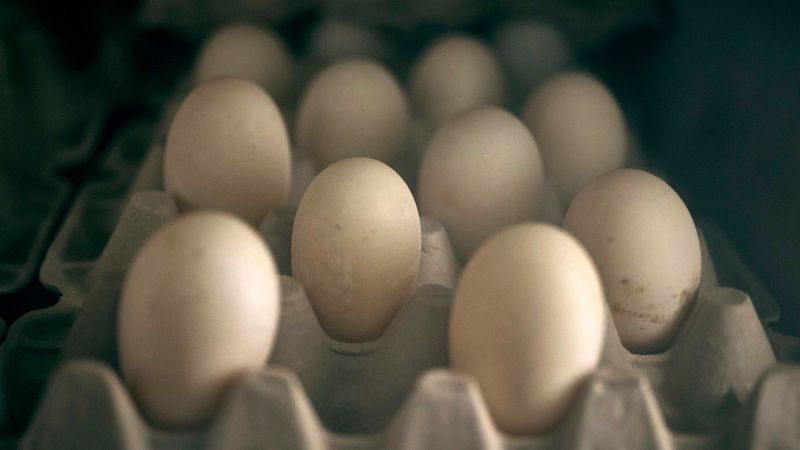
USDA Takes Action to Address Rising Egg Prices Amid Bird Flu Outbreak
Consumers are feeling the pinch as egg prices reach unprecedented highs, prompting the U.S. Department of Agriculture (USDA) to attribute these escalations to the ongoing bird flu crisis. In a bid to combat this issue, the USDA has announced a series of initiatives aimed at curbing the outbreak.
During a press briefing at the White House, Agriculture Secretary Brooke Rollins elaborated on a renewed strategy focused on alleviating the financial strain on egg prices. Rollins cautioned that it may take several months for prices to begin to decline. "We anticipate further increases leading up to Easter," she explained, noting that this spike is typical due to the high demand for eggs during the holiday.
Rollins expressed optimism that conditions could improve by summer, but she emphasized that recovery would not happen overnight. In a recent op-ed featured in the Wall Street Journal, along with a subsequent press release, Rollins laid out a comprehensive, five-point plan designed to bolster biosecurity measures on egg-producing farms and expedite recovery for farmers with depleted flocks. Part of this strategy may involve temporarily permitting egg imports to enhance supply.
Moreover, the USDA is exploring new vaccines and treatments to minimize the need for drastic measures like the culling of birds, although no specific products have been approved for use yet. “We hear your concerns about the cost of eggs; we’re committed to addressing these issues, and assistance is forthcoming,” Rollins affirmed.
As part of this initiative, the USDA plans to invest $1 billion in various actions, funded in part by budget cuts in the Government Efficiency department. The plan includes:
Reallocating $500 million to improve wildlife biosecurity measures, thereby preventing the virus from reaching farms. This initiative will expand a pilot biosecurity assessment program established during the previous administration.
Allocating $400 million to compensate farmers whose flocks have been affected. Farmers already receive compensation for lost chickens, but new eligibility requirements mandate that they pass a biosecurity audit.
Committing $100 million towards the research and development of new vaccines and therapeutic measures.
Easing regulations to facilitate family-owned backyard chicken operations.
- Considering temporary egg imports to stabilize prices more effectively.
However, some critics have voiced concerns that the plan lacks aggressiveness. For instance, it does not extend surveillance measures for milk to all states—an important consideration given that contaminated milk can harbor significant virus levels before pasteurization. Of the 70 reported cases of human H5N1 infections this year, a substantial number are linked to dairy operations rather than poultry culling.
Local farmers like Doug Corwin, who recently culled his flock of 99,000 ducks due to the flu outbreak, have expressed disappointment with the emphasis on biosecurity over vaccine distribution. "While ensuring biosecurity is crucial, effective vaccination strategies are essential to stabilize the industry," Corwin stated.
The USDA has recently issued a conditional license for a bird flu vaccine produced by Zoetis, alongside other licensed options from manufacturers like Boehringer-Ingelheim. Experts, including Dr. Jennifer Nuzzo from Brown University, highlight that while vaccines cannot entirely prevent infections, they can reduce the virus’s lethality, potentially alleviating some financial burdens on farmers.
As the USDA continues to adapt its strategies, it acknowledges that culling — the practice of slaughtering infected flocks — has not been as effective in the ongoing epidemic compared to past incidents. In the previous wave of bird flu in 2014, aggressive culling was pivotal in halting the outbreak within a year. Today, however, the consequences are daunting, with over 166 million birds estimated to have perished since February 2022.
Taxpayers are feeling the fallout from these rising expenses, facing increased egg prices while also financing indemnity payments to affected poultry producers — surpassing $1.25 billion in total over the past three years. Rollins stated that the USDA is committed to easing the overregulation of poultry farmers to facilitate their recovery without divulging precise alterations to existing rules.
While the idea of using bird flu vaccines remains contentious among poultry producers due to logistical challenges, the USDA pledges to collaborate with its trading partners to mitigate adverse impacts on U.S. producers and address public health concerns. The World Organization for Animal Health recommends vaccination as an integral part of a comprehensive approach to managing the bird flu threat and emphasizes the need for robust testing and data sharing among poultry producers.
In summary, as the USDA rolls out its plan to tackle soaring egg prices amid a significant avian flu outbreak, both agricultural authorities and farmers are under pressure to find effective solutions to stabilize supply and safeguard the health of poultry stocks.
Reporting contributed by CNN’s David Rind and Kevin Liptak.









